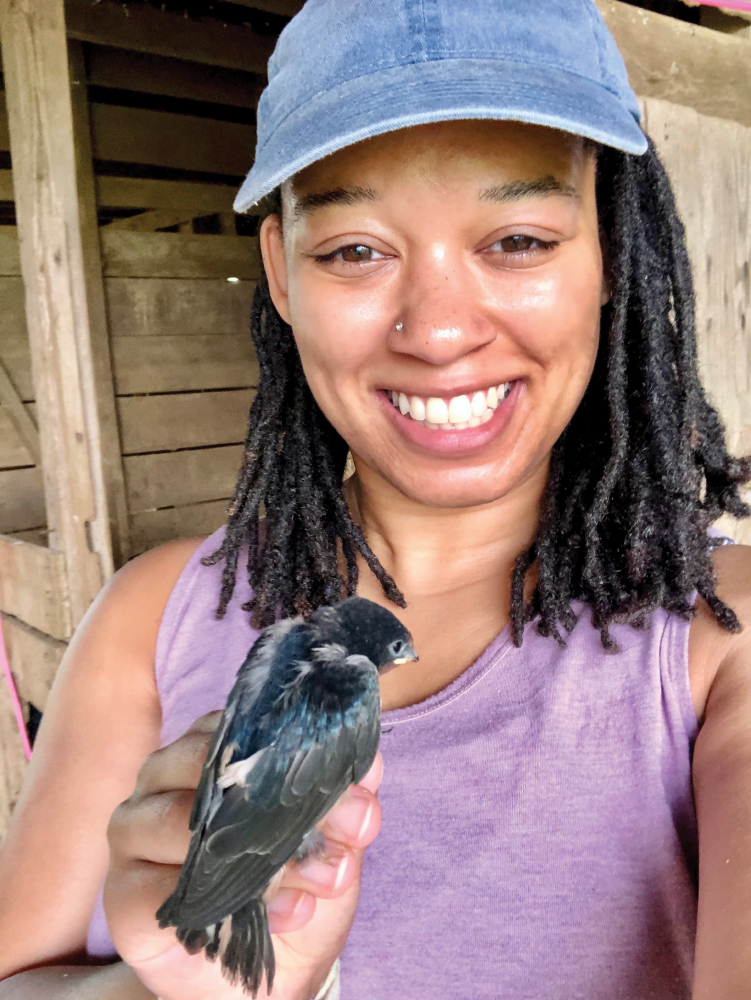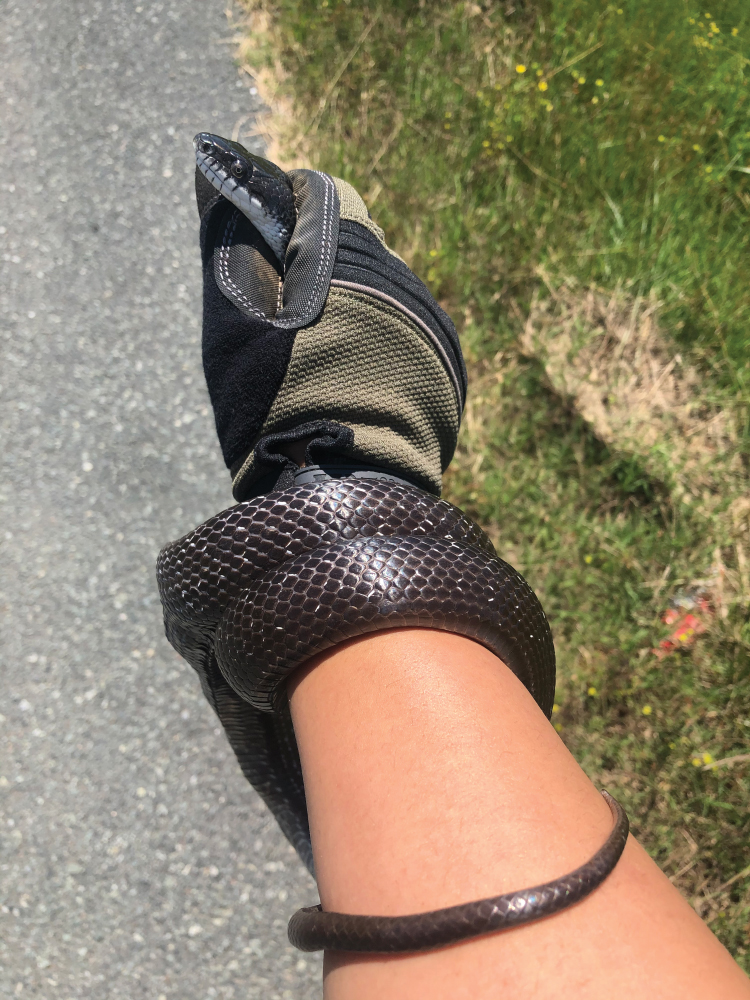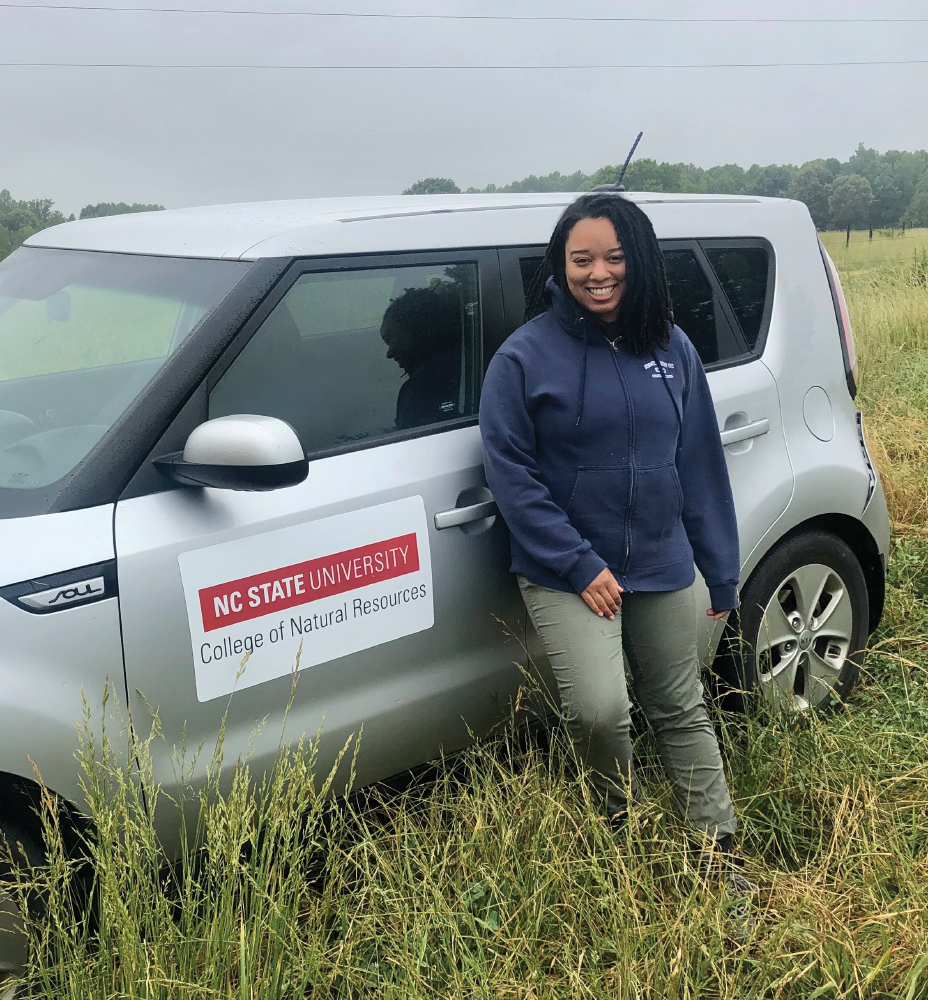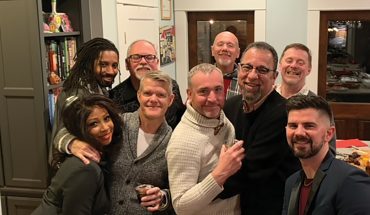A naturalist and Ph.D. student explains her complicated experience as a Black woman conducting research in the outdoors.
by Murry Burgess
I startled myself when I realized I was reaching for a large ball of scales instead of the tiny bundles of feathers I’d been expecting. The rat snake was curled up in the chicks’ nest, its body spilling over the sides. It seemed to be resting peacefully after eating my research subjects. I climbed up my 20-foot ladder, wrestled the rat snake down, and transported it a bit up the road hoping it wouldn’t return. (It did, again and again.) Then I got back to work.
Every day that I do research, I double-check that I have all my safety equipment. I pack bug spray, a first-aid kit, extra water, and, at the insistence of my mom, sunscreen. I triple-check that I pack my knife, wallet, and ID. I load these supplies, plus my 3-year-old pitbull mix, into the car.
I am a Ph.D. student studying urban ecology and ornithology in the Fisheries, Wildlife, and Conservation program at North Carolina State University. For my research, I have been conducting a field experiment in rural Snow Camp, testing how Barn Swallow chicks respond to artificial light at night during their development. The experiment takes place inside an old wooden barn with LED Christmas lights hung over the nests as my anthropogenic light source.
As a first-year graduate student, I waited in my college’s safety seminar for the topic of confrontations with others to come up. We discussed basic first aid and venomous snake identification. We were taught how to safely remove ticks and monitor bites for disease. All the example photos showed the symptoms on white skin. “What do we do if we work in urban neighborhoods and men start harassing us?” asked one of my Black female colleagues.
“Just call the police,” said the professor.
But to us, the solution felt just as dangerous as the problem: in an era where headlines are filled with Black people killed by police during routine stops, calling the police feels like inviting more serious issues. We’d rather put up with the catcalls than turn someone into another hashtag, or worse, become one ourselves.
Most of my field career has been tinged with racism, beginning before my research even started. I was looking for field lodging in Snow Camp so I wouldn’t have to commute an hour to the barn every day. There’s a campsite adjacent to the barn that was an ideal place to live for the summer. My advisor and I went to talk to the owners. The lady who warily greeted us maintained a cold demeanor as we explained our situation. The campground policy was that only five days could be paid for at a time, and she was inflexible with making allowances for me. In fact, she only spoke to my advisor, who is a white woman, and not to me. Her body was angled away from me, as if I barely existed. As a Black woman, I’m used to the constant, subtle racism of being ignored, distrusted, critiqued on my speech and appearance, or held to different standards than my white colleagues.
In a typical office, a micro-aggression such as this could be reported to human resources. But when the outdoors is your workplace and the people you interact with aren’t colleagues, there’s no HR to enforce a welcoming space. We later learned from my study site manager that her husband was seen shooting at a Bald Eagle and was reported, but never suffered a single consequence. Historically, animals have had more protection than Black people; if the federally protected symbol of America didn’t receive any protection at that location, I wasn’t confident that a young Black woman would. I didn’t feel safe and decided not to stay there.
So now, every day during my field season of late March to late July, I drive past Trump signs and Confederate flags, all in pursuit of understanding why chicks in artificial light end up smaller than chicks in natural conditions. I’ve learned to fill up in Raleigh before my commute. The gas station nearest my field site is always swarming with police cars and distrustful, prying eyes. Having been followed many times by police cars while birding or just enjoying the outdoors, my gut tells me to steer clear of that gas station. “How to safely pump gas without being cuffed or shot” was not a module in my college’s field safety seminar.
I started to feel like the knife in my bra was not enough, so I asked my college for identifying gear. Identifying field gear affiliates students with an organization and indicates that we are doing official research. My advisor made N.C. State car magnets for me, and the department is now working on developing more gear, like vests and hats, for all students in the field. Other important conversations with my department included making sure someone knew when I was at the barn and when I made it home; an arsenal of emergency contacts; and discussing interpersonal safety concerns and brainstorming solutions to them.
As part of my experiment, I occasionally need to go out at night to measure the intensity of the artificial light and see if the timers are working properly. I make sure to alert the property owner that I’ll be there, but I’ve found that having company at the barn greatly eases my hyper-vigilance. Because of COVID-19 regulations, I was unable to have undergraduate field technicians in my first year, but I always bring a friend on these midnight adventures, and we look out for each other. We try to be in and out as quickly as possible.
Besides an incident where the ladder fell out from underneath me on a muddy day, I count myself lucky to never have been injured or harassed at the barn. But one time, an unknown camper brought his truck to halt just outside the barn and began to approach me. I can’t say if it was the car magnets, the pitbull with his hackles raised, or hearing me speak to an audience on Instagram Live that stopped him, but something made him decide to mind his own business that day. I have no way of knowing that man’s intentions, but these appropriate safety precautions have the potential to save lives.
With two field seasons complete and my third coming up, I’ve become acutely aware of the lack of protective measures for researchers like me in institutions across America. I’ve heard too many stories of female researchers being harassed and minority researchers having the police called on them. Safety concerns can be a barrier to others entering the field, especially those who have been historically excluded from natural science professions. Without self-advocacy, many of us might not receive the security we deserve.
As I walked that snake away from the barn, I was annoyed that it ate the Barn Swallow chicks, but I was mostly excited to have a beautiful rat snake wrapped around my arm. I admired its smooth, black scales and needle-like teeth. I could even appreciate the cloying scent of its odor defense, simply because it was an experience with nature.
As a field researcher, I anticipate snakes, wasps, and ticks. But as a Black woman often working alone, the scariest thing I encounter in the field is other people.
__
This article was originally published in the March 2022 issue of WALTER magazine






